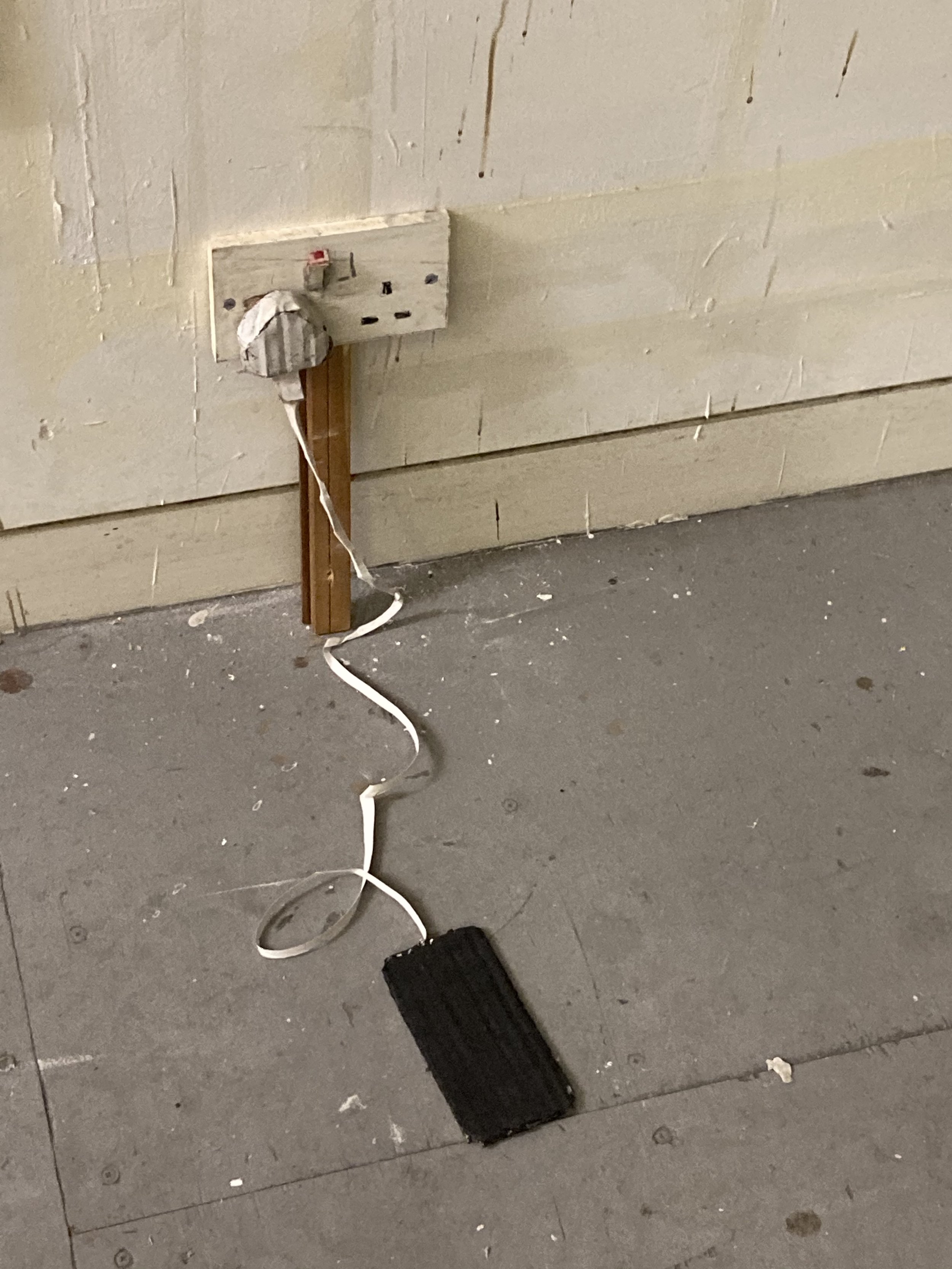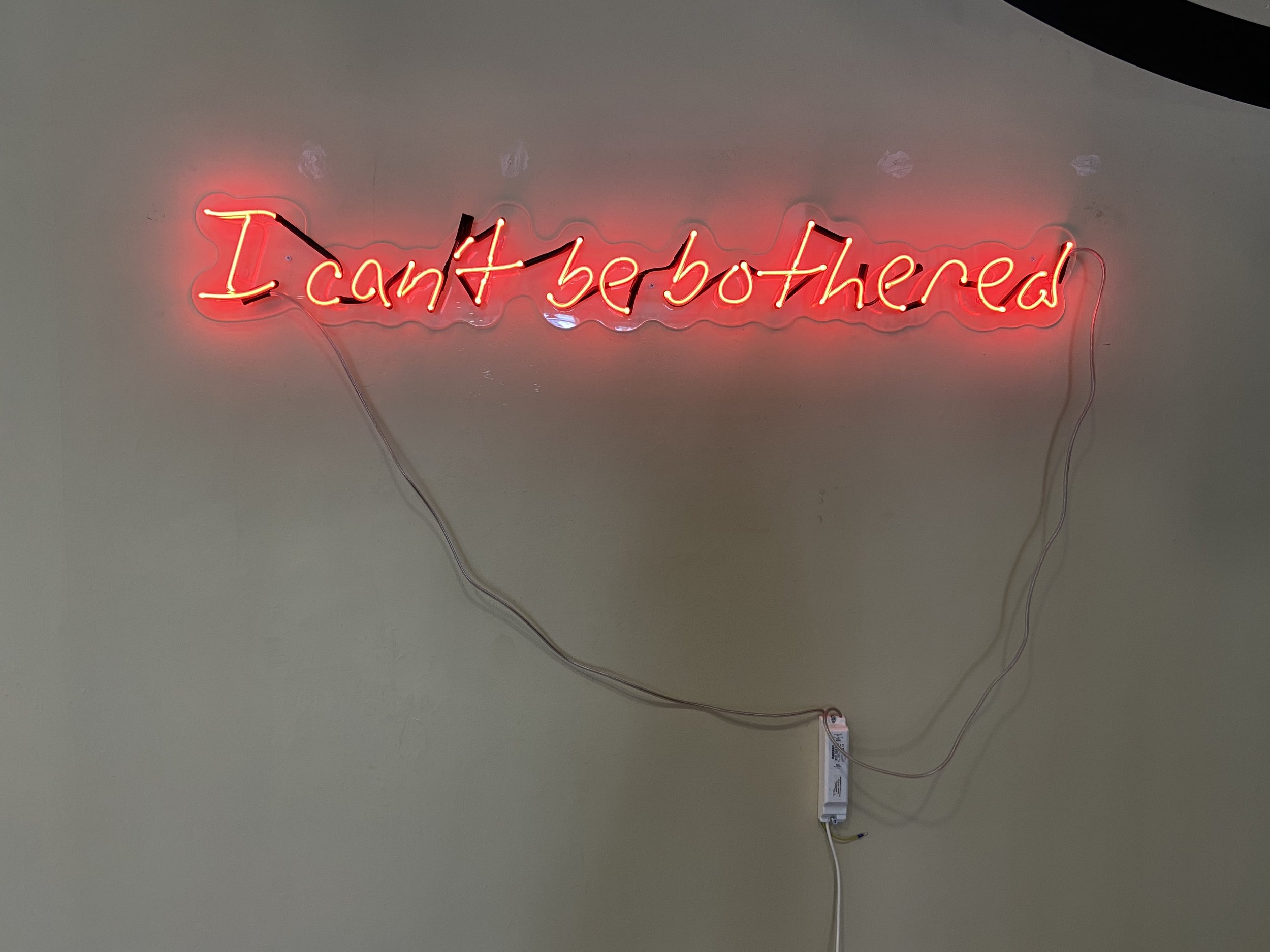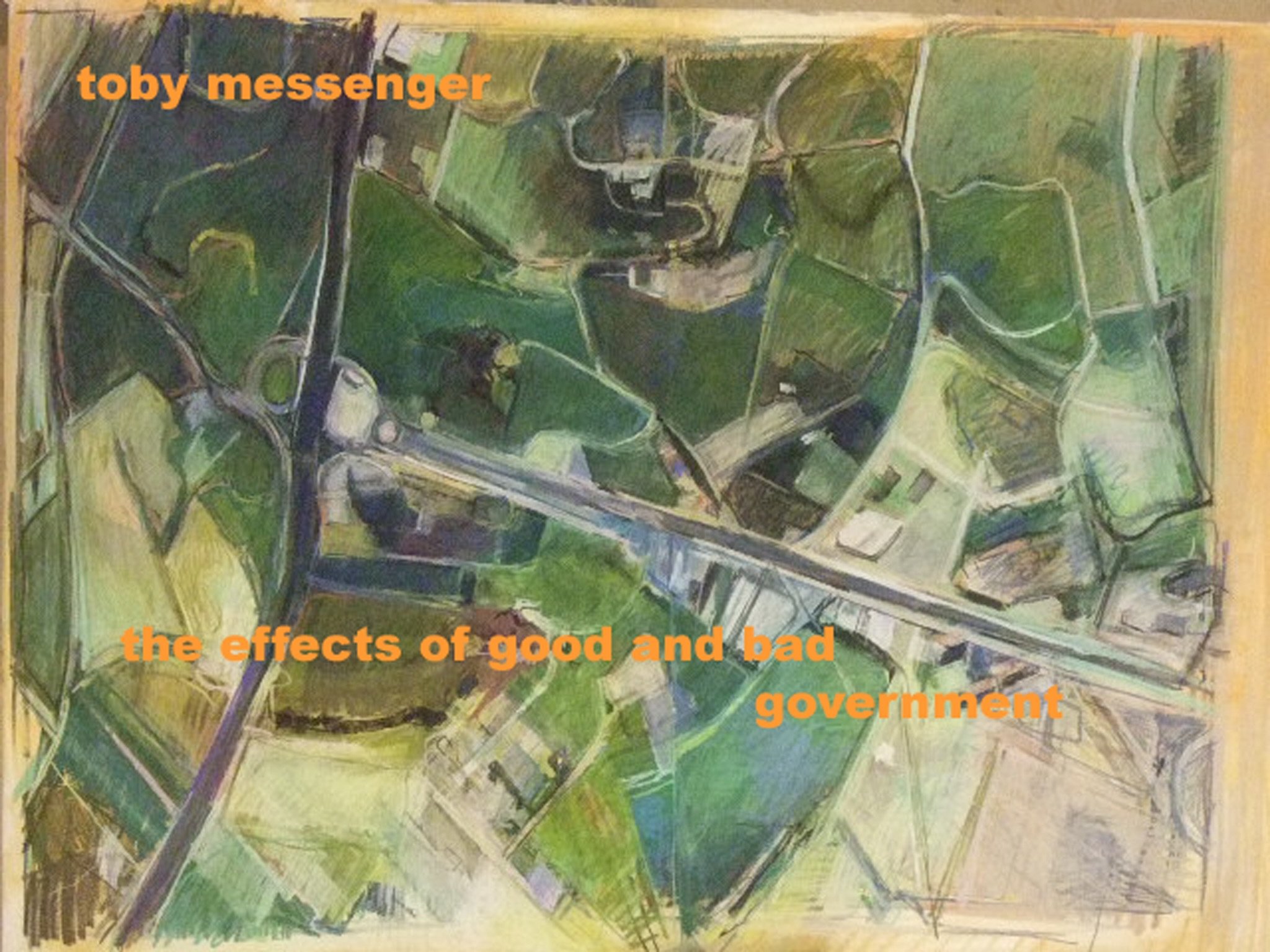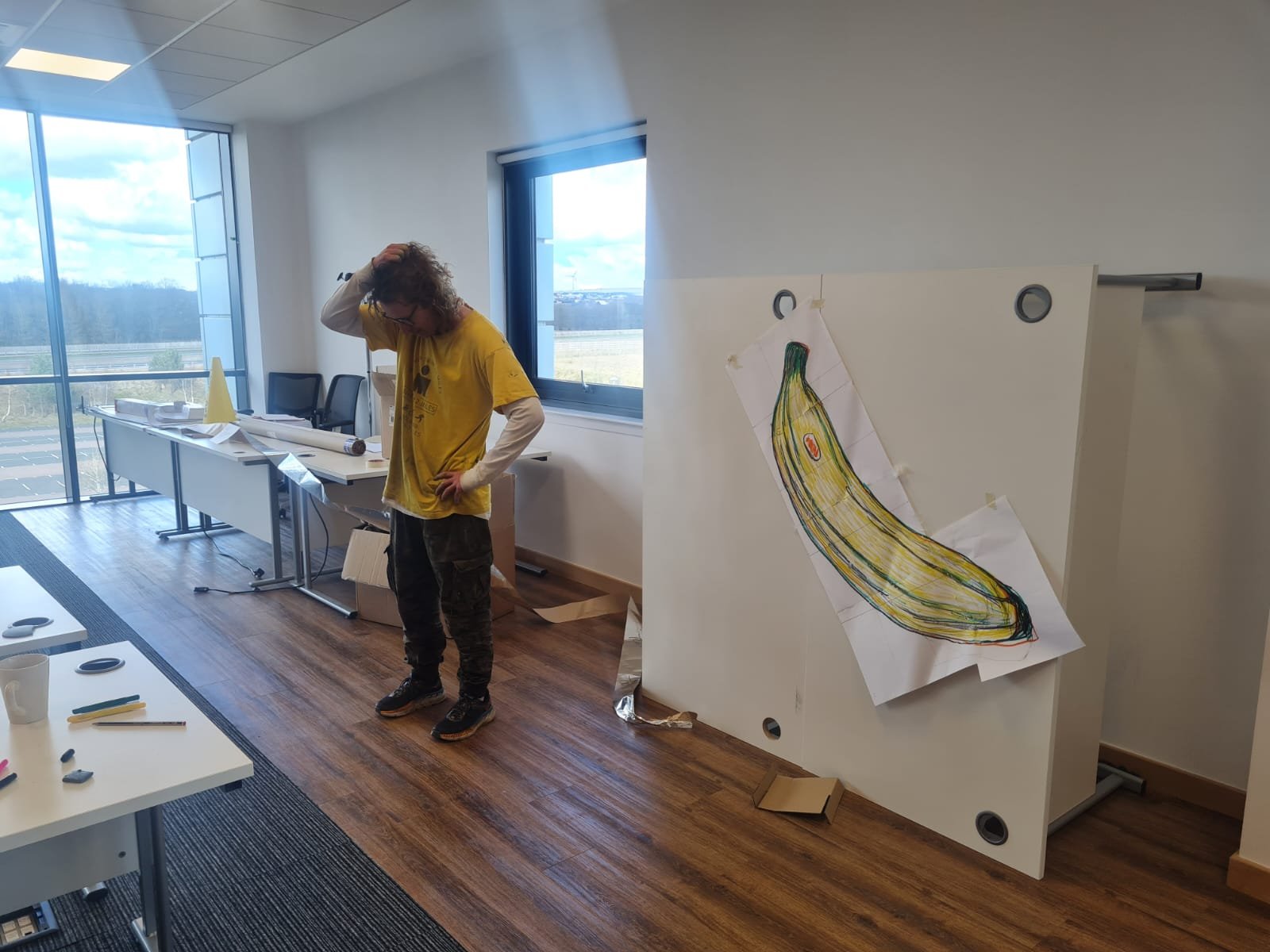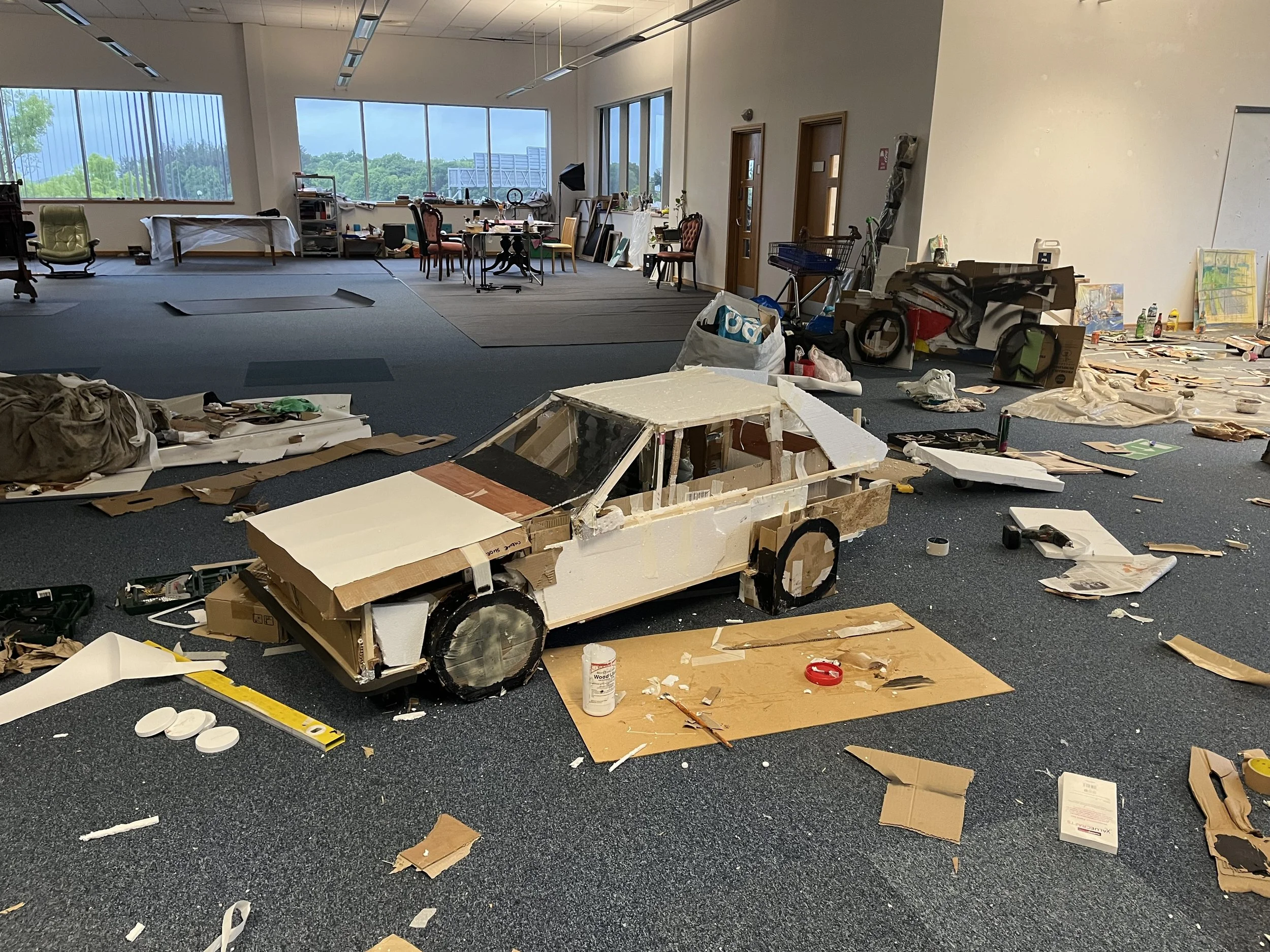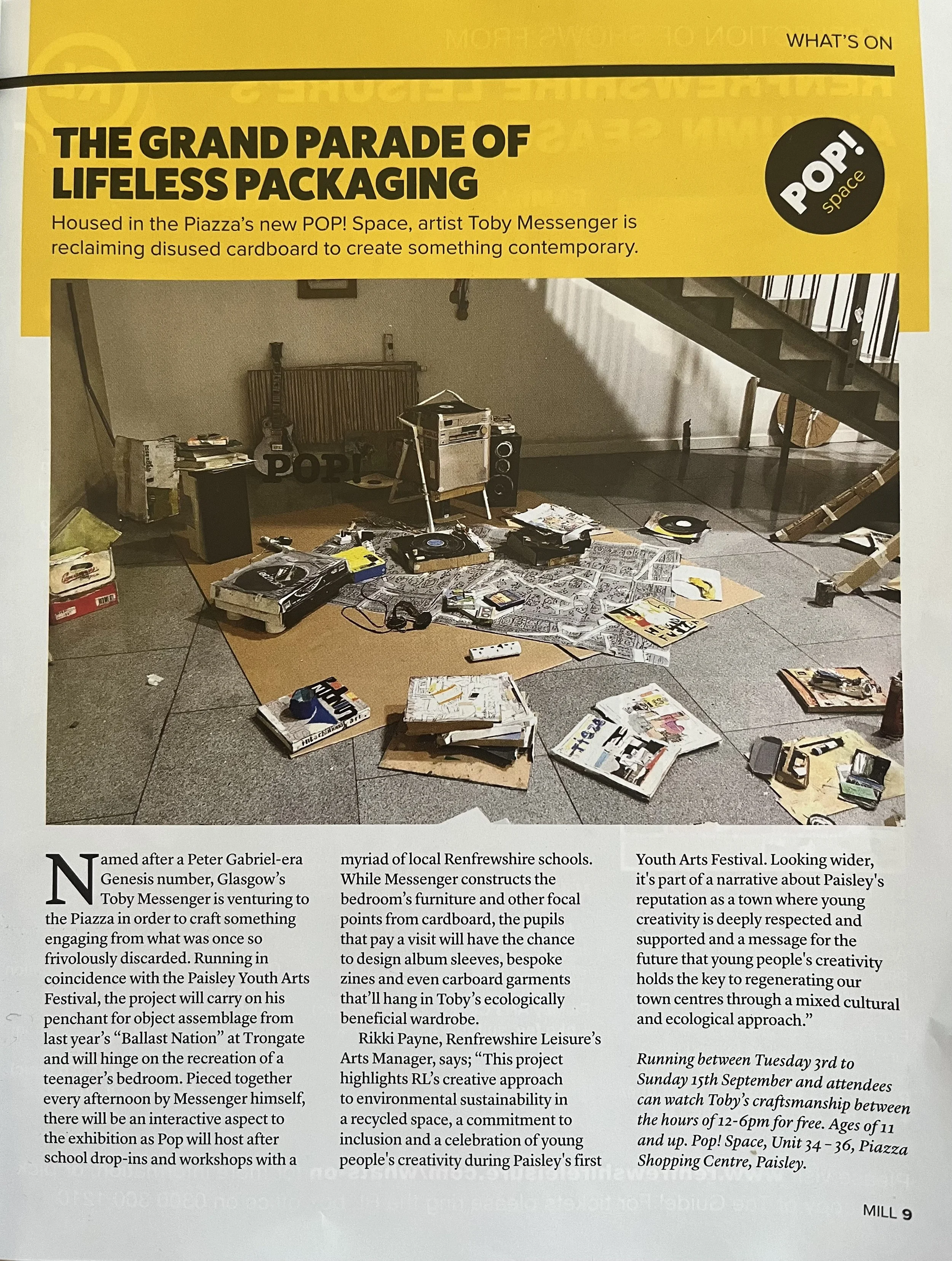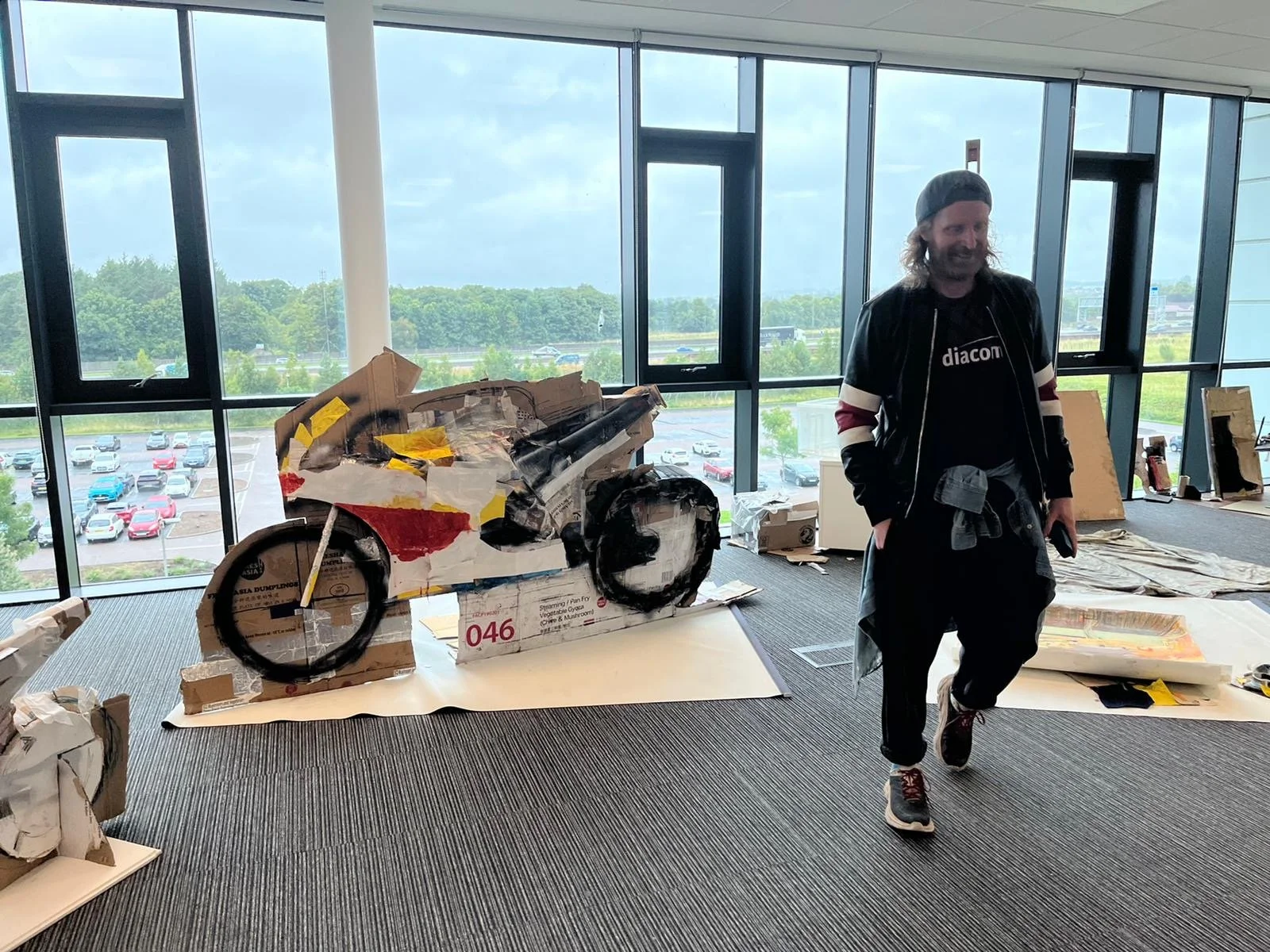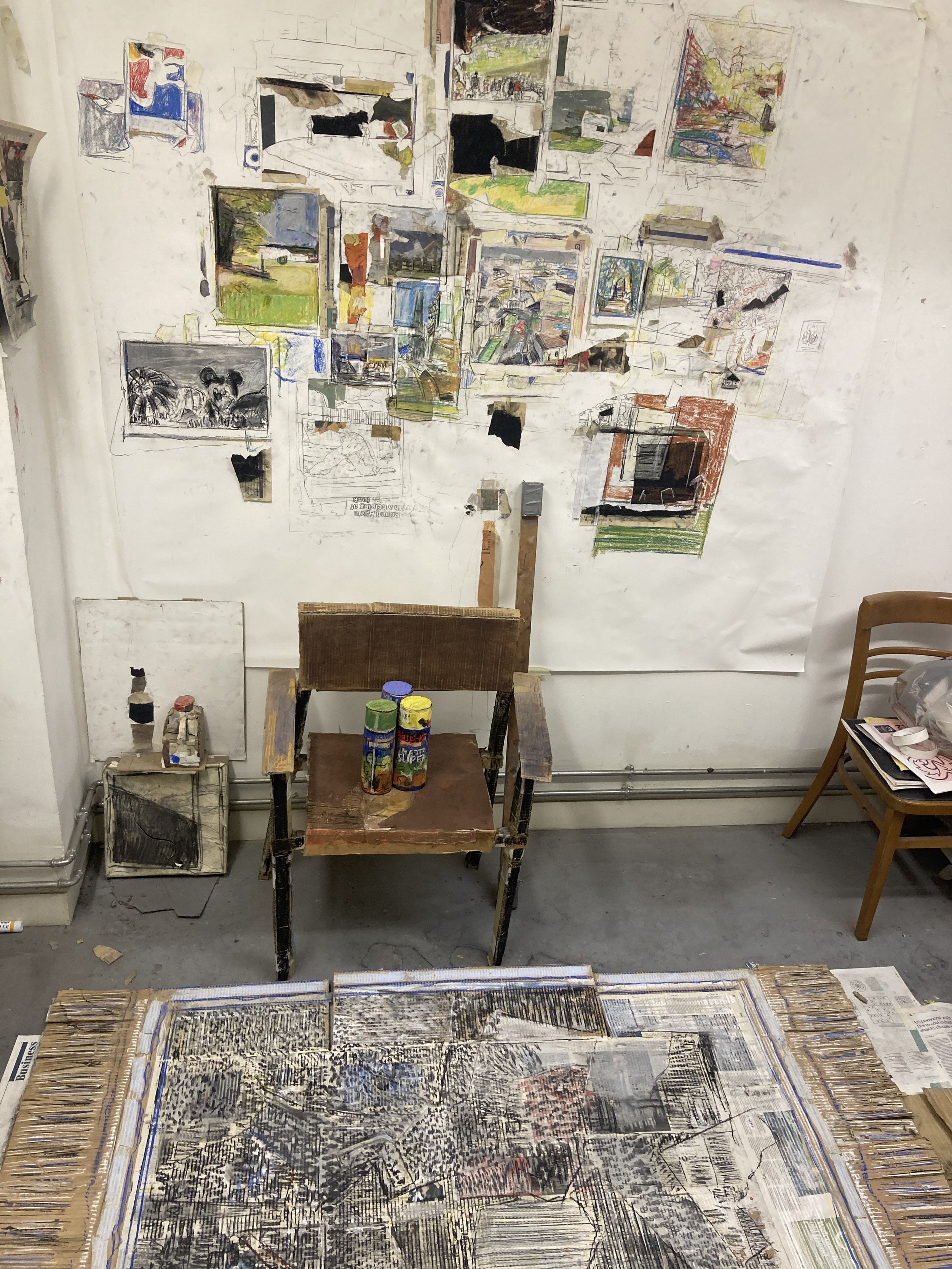
Between Drawing and Sculpture: Material Dialogues in Toby Messenger’s Practice
As Matisse wrote, ‘Rules have no existence outside of individuals’—a notion that finds tactile expression in Messenger’s work, where form arises not from theory, but through encounter and improvisation.
Toby Messenger is a Glasgow-based multidisciplinary artist whose practice draws upon a wide array of processes and a continually expanding engagement with the world around him. His inspirations are broad and often unexpected—ranging from the urban landscape to analogue instrumentation, Formula 1, rallying, MotoGP, and the overlooked flotsam of daily life.
Messenger works readily with recycled materials—wood, cardboard, paper, plastic, and packaging—combined with chalk pastels and household paints to construct scaled or life-sized pop figurative assemblages. These works recall a kind of naturalistic Merzbau—immersive, material-rich, and intuitively constructed.
Occasionally site-specific and sometimes relational, his assemblages offer a playfully direct and energetic assimilation of the quotidian. They evoke the spirit of the readymade, Neo-Dada, and Nouveau Réalisme. There is a raw honesty to the materials—a WYSIWYG sensibility—that operates at the intersection of absurdism and simulacrum, as well as at the crossroads of drawing, painting, and sculpture.
Among his recent works is a series of cars and motorbikes—scaled up from toy models—which examine themes of class, nostalgia, and mechanical obsolescence.
“The cars and bikes feel like they’re still owned by the people,” writes Andy Murray of Shapeero-Murray. “The garage is cross-cultural, as is the wreck. It speaks to older generations before cars were automised. Scrapheaps are probably going to belong to a lost generation soon, and definitely echo Brexit, whilst still leaving room for absurdism. Maybe it’s nostalgia, but woodcraft is a dying breed, as are fitters and turners. Soon engines will be defunct (on some level). So one feels like the collage and building is referencing class and protest—and a sadness for leaving beautiful shitboxes behind. Or even if he makes an F1 car, it highlights the absurdity of the industries behind it compared to the everyday humble Citroën.”
By contrast, Messenger's drawings and paintings occupy a more traditional pictorial space—yet they remain tethered to contemporary themes. These range from depictions of his studio environment to a year-long en plein air study of a static caravan park in Arbroath, which began with a three-month residency at Hospitalfield House in 2006.
Although his approaches—assemblage and drawing—may appear distinct, they are fundamentally connected through a sustained visual inquiry. The sculptural works do not depart from but rather deepen this investigation, offering a physical articulation of ideas first explored on paper. Reflecting on a period devoted to drawing and painting, Messenger likened his frustration to “ram raiding an empty store”—a vivid metaphor for creative depletion. His shift to expansive, three-dimensional forms represents not a break, but a continuation of his philosophy: conjuring presence and meaning from absence.
This approach reflects his interest in the interconnectedness of media. Observational discipline remains central, whether applied to a chalk-drawn form or a sculptural rendering of a Coke can. The same spatial logic underpins both approaches. Works like Coke Cans (2021) carry forward the visual principles first seen in his Aerial Rhythm drawing series from a decade earlier. As artist Wayne Thiebaud puts it, the “push and pull” of space—“the planimetric… its insistence and need for it… a mysterious flatness that’s also not flat”(2)—continues to drive the work forward.
"Toby Messenger's assemblage work operates like a Sega controller: one switch, and a secret highway emerges in front of you..." (3)
“Messenger's work is, for the most part, unpopulated, but he tackles landscape at a tangent... In works made on daily walks in Siena, always along the same route, Messenger is looking from the corner of his eye, turning his attention to the forms and spaces others might miss - he sees the curve of a roundabout, or the gap in a fence, ignoring grand architecture, blind to sweeping vistas. These are drawings of the spaces that enter memory, but are never remembered; the spaces, perhaps, that reveal more about a place than we realise." (4)
Henri Matisse (1908), *Notes of a Painter*, p. 2
Colin Smith (2005), "The Difference Between a Wolf and a Dog," in conversation with Wayne Thiebaud, *Turps Banana*, Issue 4
Andy Murray (2024), Foreword to *SUPER NIGHT RIDERS* at Shapeero-Murray
Jack Mottram (2005), introductory essay for in-between at inter/media, Glasgow, with painter Jackie Anderson
